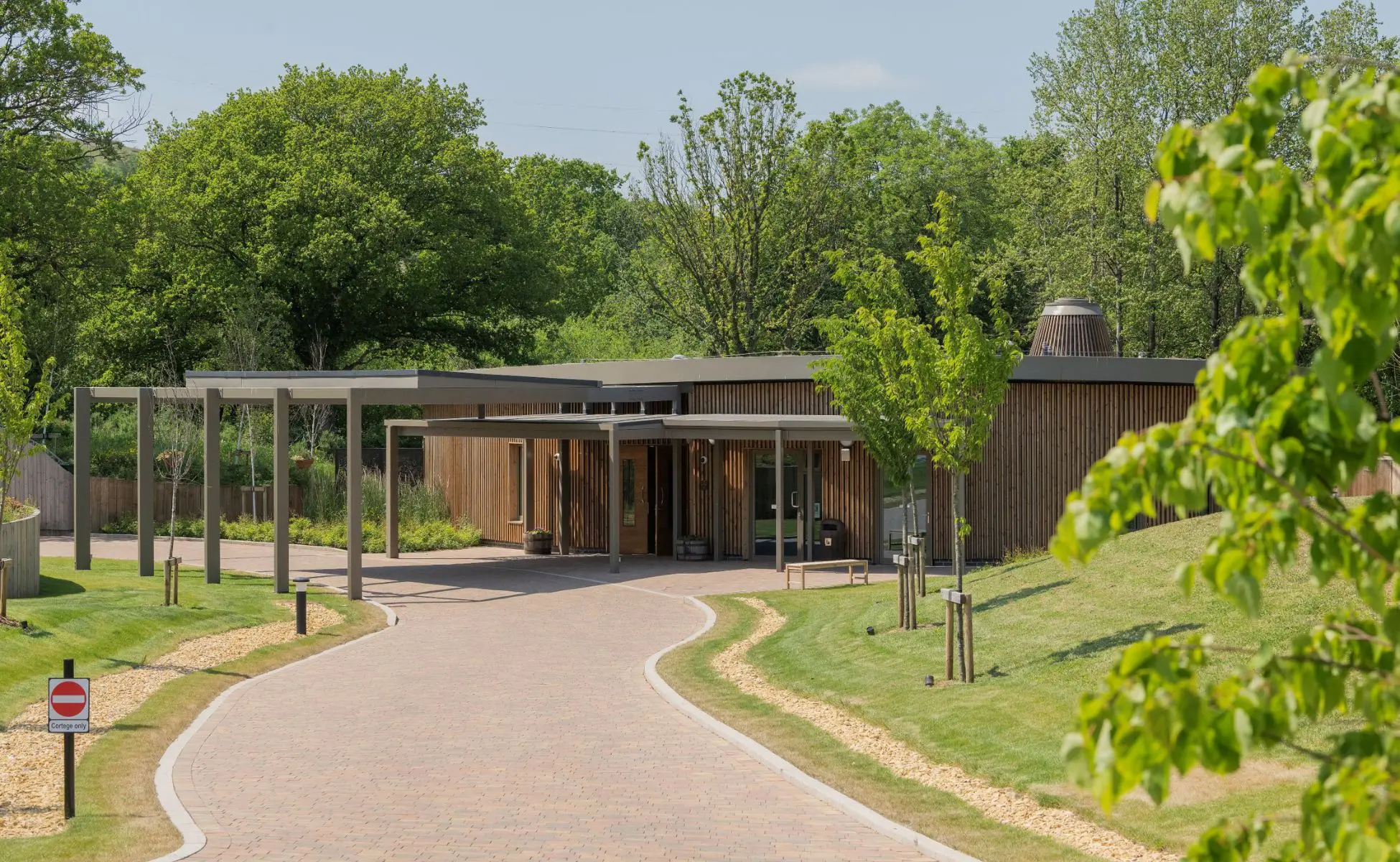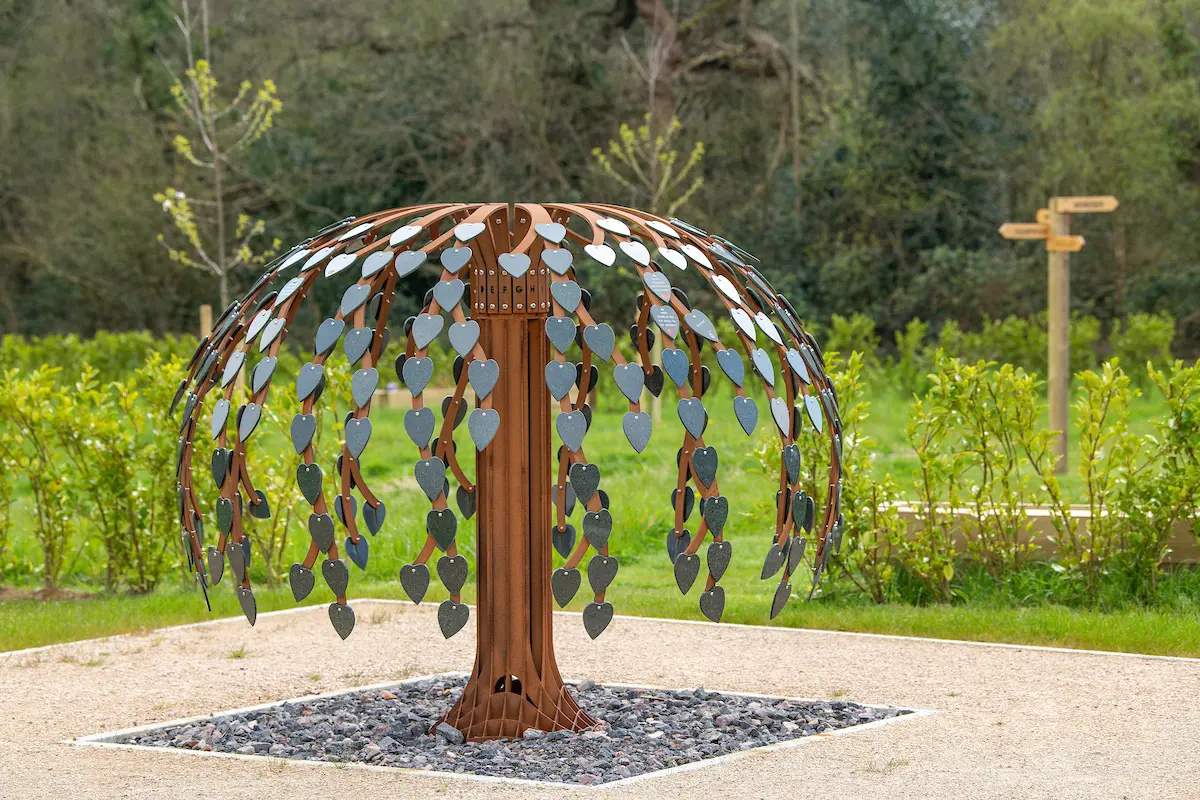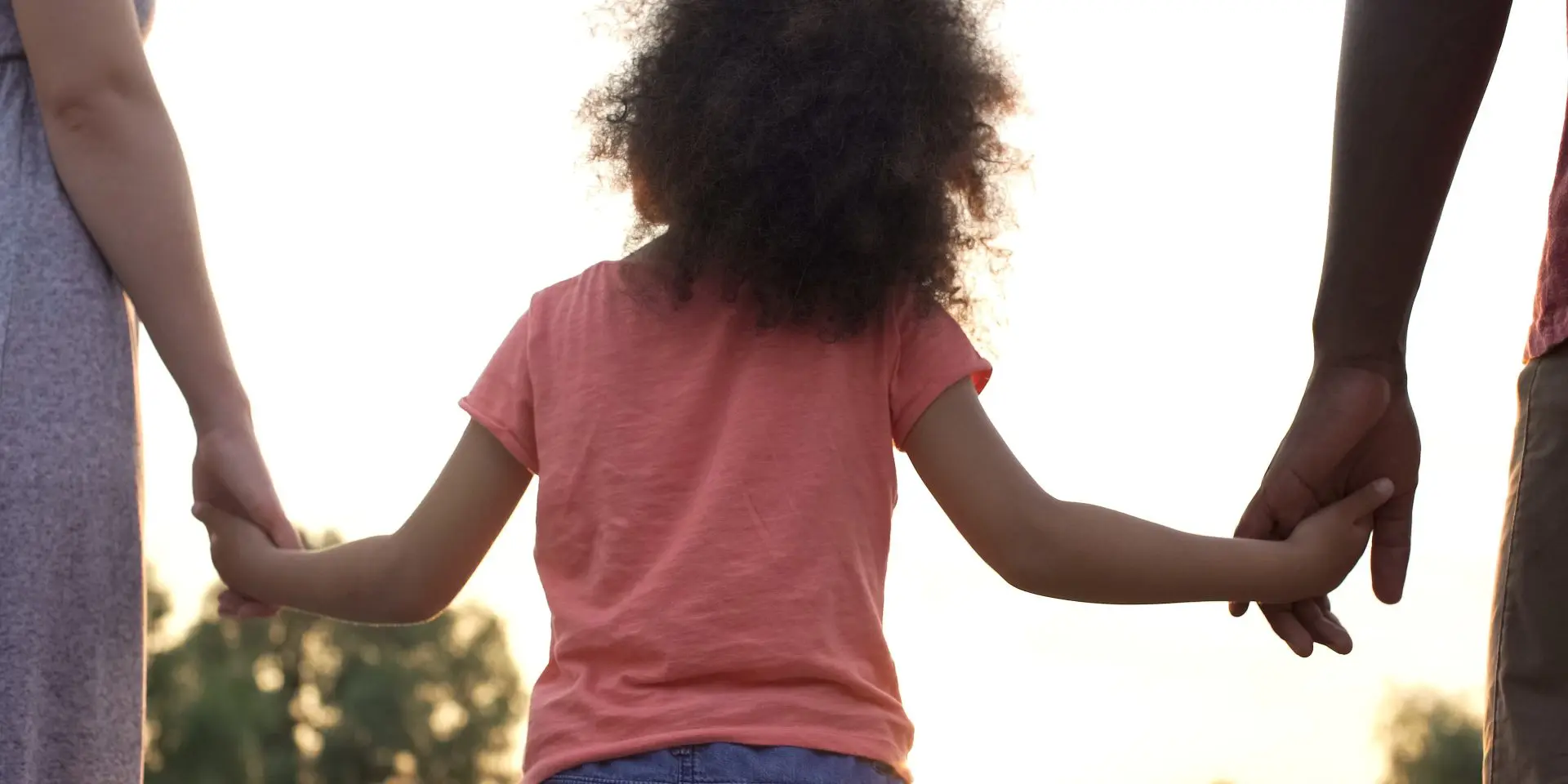What happens at a crematorium? Jason King, Head of Quality and Standards at Westerleigh Group, dispels a few myths around crematoriums and help you understand more about visiting with a child or young person.
If you’ve never been to a crematorium before, you may think of them as being sombre, gloomy places that you would only visit if you were attending a funeral. You could certainly be forgiven for asking why anyone would choose to spend time there, let alone visit with a child.
Westerleigh Group is one of the UK’s largest independent owners and operators of crematoria and cemeteries, with 41 sites in England, Scotland and Wales. Every one of them is set within beautifully landscaped gardens of remembrance which provide peaceful places for people to visit and reflect, as well as being bio-diverse habitats rich with plant and wildlife. People do not just visit a Westerleigh Group crematorium to attend funerals, they go at all different times to remember loved ones in a welcoming, comforting, environment. One of the most effective ways to find out exactly what a crematorium is really like is to visit one – and not wait until it is time to attend a funeral.
Westerleigh Group’s crematoria run open days and also have an open door policy, which means anyone is welcome to contact their nearest site and arrange a mutually convenient time to visit. This provides opportunities for people to explore the grounds and our chapels, meet our dedicated colleagues and ask any questions at all about what happens in our crematoria. If they wish, visitors can go ‘behind the scenes’ and take a tour of the crematory, too. It’s so important that visitors feel welcome and comfortable when they visit any of our crematoria, and that applies even more to children.
Funerals can, of course, be very emotional events, and the right environment and setting can go a considerable way towards making that experience a little easier. It’s understandable that someone might think that they would never consider visiting a crematorium with a child unless they really have to. But it should be remembered that children are not immune to grief when a loved one dies.
It’s important to give them a chance to feel included in what other family members are experiencing. Clear, simple, language should be used when talking to children about death, and they should be encouraged to ask questions and express their feelings. You should be honest, and provide reassurance, as children may not understand the concept of death in the same way that adults do, but will still experience grief in their own way, which is why they should be included. Winston’s Wish can help you find the words to explain anything about death, dying, and grief. You can contact them on weekdays from 8am to 8pm for immediate support by phone, email, or live chat.

One of the most commonly asked questions is, ‘how do we know for sure that our loved one is really inside the coffin?’, which is a perfectly reasonable thing to consider. We never open a coffin when it arrives at any of our crematoria, but we carry out important identification checks and scrutinise the accompanying paperwork. From the moment that a coffin comes into our care, we apply the exceptional standards of service that Westerleigh Group has built its reputation on. Part of that involves a thorough audit trail which is maintained and followed, all the way from the moment the coffin arrives at the crematorium right up to the final return of the ashes to the family. We conduct this audit trail with meticulous attention to detail.
Another common query concerns what happens towards the end of a ceremony, when the curtains close. Many people believe that the cremator is either directly behind the wall on the other side of the curtain, or that the coffin is lowered directly into a cremator, and that the process begins straight away. This is not always the case. When the curtains close, the coffin is very carefully transferred to the crematory, and the cremation itself takes place within the shortest possible time. Whereas typically a funeral service can last between 10 minutes and 1 hour, the average cremation process takes one and a half hours, so you can see how, if there are several services in a day, the actual cremation can’t happen at the same time.
The other question we are often asked is, ‘what happens to the ashes after cremation?’ There are many choices, from scattering or burying them in the garden of remembrance which includes a wide range of memorial options. There is no need to make a hurried decision about the final resting place of the ashes. Some families prefer to hold onto them until they decide what to do, but we also have the facility to care for the ashes until a decision is made.

We are also often asked if we can personalise our chapel, making it more welcoming for all family and friends of the deceased, not just for children. And the answer to that, of course, is yes. We pride ourselves on doing whatever we can to make a service as uniquely personal as possible. For example, we recently hosted a traditional service for a young family who lost their mother. We re-arranged the chapel for an ‘afternoon tea’ – one of her favourite activities – so that her family could have one last special ‘picnic’ with her before saying goodbye.
The exceptional care and support that Westerleigh Group provides to the bereaved does not stop at the end of a funeral service. My biggest piece of advice to anyone who has any questions at all about the cremation process is to contact their nearest Westerleigh Crematorium and arrange a visit – for them, and their children – and to see for themselves that our crematoria are very peaceful and comforting surroundings served by caring and compassionate colleagues.
If you’re supporting a child or young person and would like to ask questions and find out more about the language you can use to explain grief, death, and dying to them, please reach out to Winston’s Wish. Immediate support is available over the phone, by email, or on our live chat, and you don’t have to join a waiting list to speak directly to a Bereavement Support Worker.

Accessing Support
Speak to our bereavement support team to talk about supporting a bereaved child of young person, or know a child or young who would like to talk to someone through our On-Demand services.

Call
Call us for free on 08088 020 021 between 8am-8pm, weekdays.

Email us on ask@winstonswish.org or fill out our contact form and we’ll reply within two working days.

Live Chat
Chat online between 8am-8pm, weekdays by clicking the blue ‘Chat with us’ button at the bottom right of your screen.

Text
For out of hours mental health support, text WW to 85258 to speak with someone from our trusted partner, Shout. For urgent support in a crisis, please call 999.


